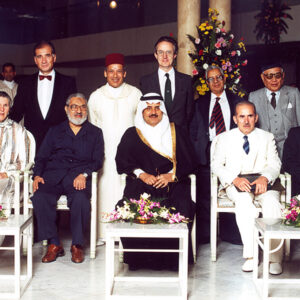

Professor Ricardo Miledi
King Faisal Prize in Science 1988 Laureate
Topic: "Biology "
It is fair to say that all those brain functions that make an individual’s learning, memory, love, hate, etc. depend on the correct functioning of the nerve cell and their synapses

Ricardo Miledi received his B.Sc. and M.D. at the Autonomous University of Mexico (Universidad Autonoma de Mexico), where he served at its National Institute of Cardiology. He held a fellowship at the Marine Biological Laboratories in Woods Hole, Massachusetts (USA) and a Rockefeller Foundation Fellowship at the John Curtin School of Medical Research in the University of Canberra, Australia. Following this, he joined the University College London from 1958 to 1985, and took on several positions, including an Honorary Research Associate in the Department of Biophysics, a Professor of Biophysics, a Foulerton Research Professor of the Royal Society, and a Head of the Department. In 1985, he moved to the University of California, Irvin, where he served as a Distinguished Professor of Neurobiology and Behavior.
Professor Miledi was a world authority in neurophysiology, particularly the physiology of synapses. His fundamental studies of the processes by which nerve cells transfer information to muscles and other nerve cells opened the way for the advent of new methods for studying the brain. His research also focused on understanding signal transmission across nerve cells at the molecular level. Miledi’s overall contribution to neurophysiology had been significant for understanding certain neurological disorders and developing new methods of treatment. He published more than 350 papers in prestigious scientific journals and is one of the 10 most cited neurobiologists of all times. He also mentored generations of graduate students and postdoctoral fellows.
Miledi was a Fellow of the Royal Society (London), the American Academy of Arts and Sciences, the American Association for the Advancement of Science, the Third World Academy of Science, and the National Academy of Medicine and National Academy of Science in Mexico. He was the recipient of many illustrious prizes and honors; he was awarded an honorary doctorate degree by the University of the Basque Country and the Royal Medal from the Royal Society (London).
This biography was written in the year the prize was awarded.
- He received many awards and honors including:
- Prince of Asturias Prize for Scientific Research in 1999.
- University of Irvine Medal in 2000.
- Wendell Krieger Lifetime Achievement Award in 2007.
- Ralph W. Gerard award in 2010.
- Professor Ricardo Miledi passed away on 18/12/2017.



